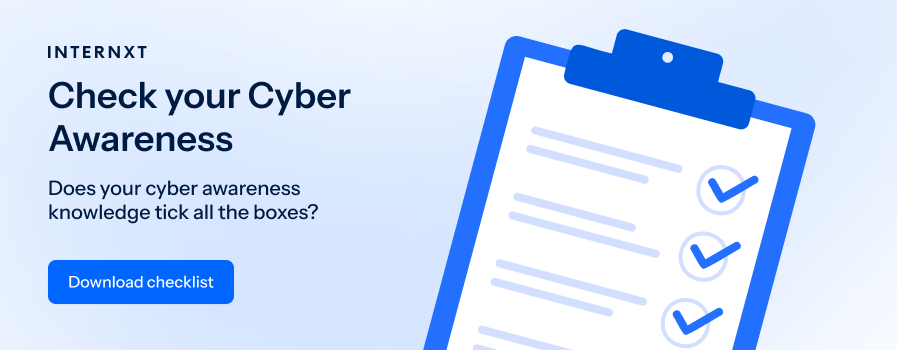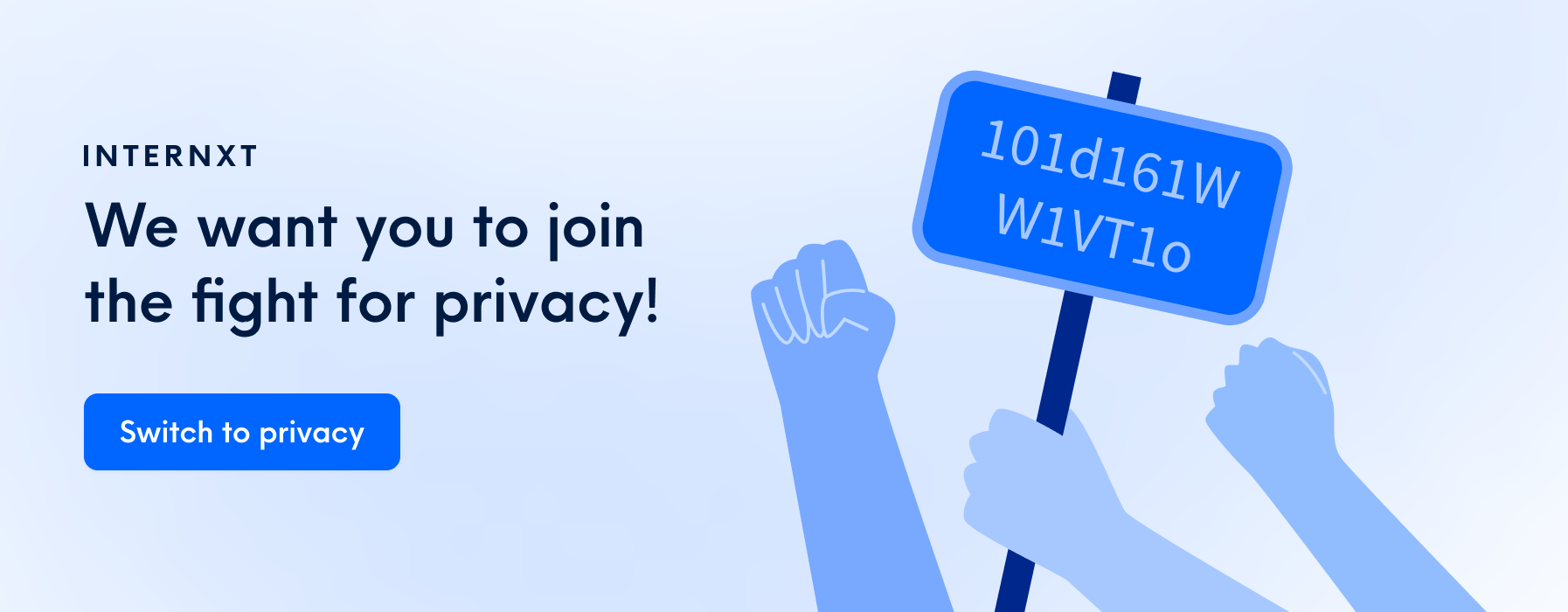Remote Work Cybersecurity: 9 Data Protection Strategies

The rise of remote work, which currently sees 40% of US employees working remotely at least one day a week, has been fueled by technological advancements and recent global events.
But with this shift comes a silent, lurking challenge: cybersecurity. The vast, interconnected web of remote workspaces amplifies the potential for cyber attacks.
Businesses must protect their data to maintain the trust of customers, preserve their reputation, and ensure uninterrupted business operations. As remote work becomes an enduring facet of the business landscape, so does the unyielding focus on crafting, implementing, and regularly updating data protection strategies tailored for this new age of work.
So, how can businesses navigate this digital frontier safely? Dive into our guide on data protection strategies tailored for the remote work landscape and ensure your business remains fortified in an ever-evolving digital terrain.
What Is Data Protection?
Data protection, at its core, refers to the practices, safeguards, and binding principles put in place to protect personal and sensitive information from being accessed, shared, or stolen without authorization.
But it's not just about keeping data under lock and key. Data protection encompasses a broad spectrum of activities, the most common of which is that businesses need to obtain explicit consent before collecting or sharing personal data. They must also allow individuals to opt-out if they so choose. Other activities involve:
- Prevention: Implementing security measures to deter unauthorized access. This includes techniques like encryption, two-factor authentication, and firewalls.
- Regulatory compliance: Adhering to established guidelines and regulations, like the General Data Protection Regulation (GDPR) in the European Union or the California Consumer Privacy Act (CCPA) in the US. These regulations stipulate how data should be handled, stored, and shared, ensuring businesses remain accountable.
- Recovery: Having a Recovery Time Objective strategy and systems in place to restore data in case of loss through mishaps like server crashes, malware, or even natural disasters.
- Transparency: Keeping stakeholders informed about how their data is being used. This might involve clear privacy policies or direct communications detailing data usage.
- Access control: Determining who within an organization can view, modify, or distribute data. This is especially vital in large teams or when dealing with highly sensitive information.
In essence, data protection is about striking a balance. While data is a crucial driver for innovation, data-driven customer experience, personalization, and business growth, it's equally essential to handle it carefully, ensuring the trust of users and stakeholders alike.
In the remote work era, with data flowing across various networks and devices, this balance becomes even more critical to maintain, but can be made easier with the correct remote access security protection.
Why Is Data Protection So Important for Remote Work?
Remote work offers undeniable benefits — flexibility, reduced commute times, and the opportunity to tap into a global talent pool. Additionally, remote desktops are prevalent in enabling seamless access to company resources.
In fact, a hybrid workplace report found that 62% of workers said that one of the biggest downsides is commuting to the office. Yet, with teams scattered across different locations, accessing company data from various devices and networks, vulnerabilities emerge.
Each remote connection potentially serves as an entry point for malicious actors. Consider a scenario where an employee connects to the company's server from a local cafe, using an open, unsecured Wi-Fi network. The data being transmitted can easily be intercepted, leading to potential breaches.
Moreover, the software used for remote work — be it personal laptops, smartphones, or tablets — might not always have the same stringent security protocols as in-house company systems. The lack of standardized security measures across these devices amplifies the risk manifold.
Malicious Actors Are More Advanced Than Ever
In tandem with the rise of remote work, the digital era has seen cyber threats becoming more sophisticated, targeted, and damaging.
No longer are hackers just mischievous individuals showcasing their skills; they're often part of organized networks with vast resources and sinister objectives. From ransomware that locks out essential data, and demands hefty sums for release, to phishing schemes that deceive employees into handing over sensitive information, the tactics are diverse and continually evolving.
The value of securing data in today's economy makes businesses, regardless of size or industry, attractive targets. Whether it's intellectual property, customer information, or financial details, cybercriminals recognize the goldmine that business databases represent.
And with remote work broadening the attack surface, businesses find themselves in a perpetual game of cat and mouse, trying to stay a step ahead of these cyber adversaries, which is why we cover these essential tips for hybrid workers and in the remote workplace.

8 Common Cybersecurity Threats Faced By Remote Workers
The cyber landscape can be difficult to navigate for remote workers, who often juggle tasks across diverse networks and devices. This is why a thorough understanding of how data protection can be a valuable asset to defend against cyberattacks is paramount:
1. Phishing Attacks
One of the oldest tricks in the cybercriminal playbook, phishing attacks remain alarmingly effective, and common - in just 6 months during 2022, there were at least 255 million email and messaging attacks.
These attacks typically come in the form of deceptive emails or messages, mimicking legitimate entities, intending to deceive the recipient into sharing sensitive information or downloading malware. With remote workers often reliant on tools such as email, VoIP phone systems, and online communication, they can be prime targets.
2. Unsecured Wi-Fi networks
Public Wi-Fi networks, like those in cafes or airports, can be hotspots for cyber snooping. These networks often lack security protocols, making it relatively easy for attackers to intercept data being transmitted or even inject malicious payloads into the user's device.
3. Ransomware
This malicious software encrypts a user's data, holding it hostage until a ransom is paid. Remote workers, without the immediate support of an on-site IT department and possibly using personal devices with outdated security patches, can be particularly vulnerable to such attacks.
4. Man-in-the-Middle Attacks (MitM)
In MitM attacks, cybercriminals intercept and potentially alter the communication between two parties without their knowledge. For instance, when a remote worker accesses a company database, an attacker could capture the transmitted data or even insert malicious code.
5. Endpoint Exploits
Each device a remote worker uses to access company resources, be it a laptop, tablet, or smartphone, serves as an endpoint. If these devices lack the latest security updates or are infected with malware, they can become gateways for attackers into the broader company network.
6. Weak or Reused Passwords
While it might be convenient to use 'password123' across multiple platforms, such habits are a cyber attacker's dream. Brute force attacks, where hackers systematically attempt all possible password combinations, or credential stuffing, where stolen passwords are used to gain unauthorized access, can exploit weak password practices.
7. Shadow IT
This refers to the use of software and applications not officially approved by the company's IT department. Remote workers, aiming for convenience or familiarity, might resort to using such tools, unknowingly introducing vulnerabilities into the system.
8. Social Engineering
Beyond technical hacks, cybercriminals are also adept at manipulating human psychology. By posing as a colleague or superior, attackers might coax remote workers into divulging confidential information or performing actions that compromise security.
In the face of these threats, awareness is a potent weapon. Remote workers, armed with knowledge about potential cyber dangers and equipped with best practices, can significantly bolster their data protection tactics, ensuring that they remain productive without compromising their digital security.
Steps to Protect Your Data in Remote Environments
The following proactive steps and robust data protection strategies will give your business a solid foundation to mitigate remote work cybersecurity risks.
1. Develop A Comprehensive Cybersecurity Policy
A well-articulated cybersecurity policy sets the foundation for data protection in a remote work environment. It serves as the roadmap, guiding employees on safe online behavior and practices. This also includes maintaining clear records of all compliance-related activities, from training sessions to audits.
How it helps: By having a clear framework, ambiguities are reduced, ensuring that all team members understand the expected protocols, tools, and behaviors.
Implementation strategy: Begin by identifying potential vulnerabilities in your current setup. Engage with your IT department to draft a policy and, importantly, ensure it's accessible and easy to comprehend. Regular reviews and updates, taking into account the changing cyber landscape, will keep it relevant.

2. Know Where Your Data is Stored
Awareness of data location is crucial. Without this knowledge, protecting it becomes much more difficult.
How it helps: Centralized data storage minimizes risks associated with data scattering across diverse locations and devices.
Implementation strategy: Invest in centralized storage solutions like cloud services. Regularly conduct data audits, ensuring that no rogue copies or redundant storage points exist.
3. Provide Employee Training
A well-informed team is one of the most potent defenses against cyber threats.
How it helps: By educating employees about threats and best practices, they become active participants in the company's cybersecurity efforts.
Implementation strategy: Schedule regular training sessions, workshops, and even mock threat scenarios. Ensure that training content is updated to reflect the latest threat environment.
4. Use Secure Internet Connections
In the realm of remote work, the quality of internet connections becomes paramount.
How it helps: Secure connections prevent unwanted interceptions and unauthorized data access.
Implementation strategy: Encourage employees to use Virtual Private Networks(VPNs). Additionally, provide guidelines on the dangers of public Wi-Fi and the advantages of personal or secured networks.
5. Enforce Zero Trust Network Access (ZTNA)
ZTNA operates on a simple principle: trust nothing, verify everything.
How it helps: By not giving blanket access and continuously validating user credentials, potential breaches can be minimized.
Implementation strategy: Implement ZTNA solutions that grant access based on user identity, application sensitivity, and other contextual factors. Regularly review and adjust access permissions as roles change or evolve.
6. Implement a Strong Password Policy
Strong passwords remain the gatekeepers to a world of data.
How it helps: Strong, unique passwords can be formidable barriers against unauthorized access.
Implementation strategy: Set technical requirements for password creation (length, complexity, including numbers, upper and lower case letters, and symbols such as #$%). Promote the use of password managers and mandate periodic password changes.
7. Employ Multi-Factor Authentication (MFA)
Layering security protocols enhances protection.
How it helps: With MFA, even if one security layer is compromised, others remain to thwart unauthorized access.
Implementation strategy: Adopt MFA solutions that use a combination of something the user knows (password), something they have (a phone to receive a code), and something they are (fingerprint or facial recognition).
8. Securely and Regularly Back Up Data
Backs are your safety net against data loss scenarios.
How it helps: Regular backups ensure data recovery in the face of accidental deletions, hardware failures, or cyber-attacks.
Implementation strategy: Automate backups to occur at predefined intervals. Use a hybrid approach, combining both cloud storage and physical storage solutions for redundancy.
9. Institute End-to-End Encryption
Encrypting data involves transforming data into an unreadable code, preventing unauthorized access.
End-to-end encryption is used in services like cloud storage, file sending, and qualified electronic signatures, all of which are essential tools for remote workers.
How it helps: E2E encryption ensures that data, while in transit or at rest, remains unintelligible to any unauthorized party.
Implementation strategy: Choose platforms and services that offer robust encryption standards. Ensure that data is encrypted right from its source and only decrypted by the intended recipient.
Compliance and Regulatory Considerations for Remote Work
Regulatory compliance doesn't only serve to keep organizations on the right side of the law. At its core, it's a commitment to ethical standards, best practices, and maintaining a high level of data protection. We can not understate the importance of adhering to compliance and regulatory standards when it comes to remote work, cybersecurity, and your data security, for several reasons:
Consumer Trust
In the first quarter of 2023 alone, more than 6 million data records were exposed worldwide through data breaches. In such a time, organizations that strictly adhere to compliance standards enjoy elevated consumer trust. The transparent handling and protection of user data signal reliability and responsibility.
Moreover, the incorporation of a secure corporate email signature not only adds an extra layer of authentication but also strengthens the overall trust in digital communications, underscoring the organization's commitment to data security and professionalism.
Risk Mitigation
Compliance with regulations ensures that the organization has done its due diligence in safeguarding against threats, thereby mitigating risks associated with potential breaches, data losses, and subsequent legal repercussions.
Operational Excellence
Regulatory frameworks often align with best practices in the industry. Thus, adherence often translates to optimized operations and efficient processes.
Key Regulatory Frameworks to Consider
Different sectors and regions have their specific sets of regulations. However, some globally recognized frameworks include:
- GDPR (General Data Protection Regulation): Enforced by the European Union, GDPR focuses on data protection and privacy for individuals within the EU and the EEA. It also addresses the export of personal data outside these regions.
- HIPAA (Health Insurance Portability and Accountability Act): Specific to the US, this act ensures the protection of health information. Organizations dealing with protected health information must ensure that all the required security measures are in place.
- CCPA (California Consumer Privacy Act): While it's a state-specific regulation, the CCPA has wide-reaching implications, granting California residents extensive rights over their personal data.
- ISO/IEC 27001: An international standard for information security management. Organizations that meet this standard have demonstrated a robust commitment to information security.
Ensuring Compliance with Regulations
Ensuring people comply with business regulations, especially in a remote work setting, can seem daunting. But with a systematic approach, it becomes manageable:
- Continuous education: Regulatory landscapes evolve. Regular training sessions for team members ensure everyone is updated on the latest requirements.
- Audits and assessments: Periodically assess your organization's compliance status. External audits can provide an objective evaluation of where you stand and what gaps need addressing.
- Leverage technology: Use software and tools designed to aid compliance. These can range from data encryption tools to comprehensive security management solutions that align with specific regulations. Incorporating compliance training software into your toolkit streamlines adherence to these regulations and empowers your remote workforce with the knowledge to protect sensitive data effectively.

Taking a Future Approach to Remote Work Cybersecurity
The modern interconnectedness of our world brings unparalleled conveniences, remote work among them, yet it also ushers in multifaceted challenges. Among these challenges, protecting sensitive data stands out prominently.
Throughout this article, it becomes evident that being proactive, rather than reactive, is the key. From understanding the essence of data protection to recognizing common threats, every piece of information protects us against potential cyber attacks.
It’s clear that the investment in robust cybersecurity isn't just about data protection; it's about building trust, maintaining reputation, and ensuring that the digital future we're hurtling towards is secure and prosperous.

